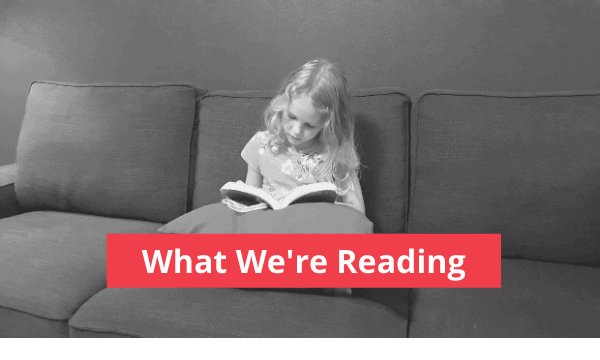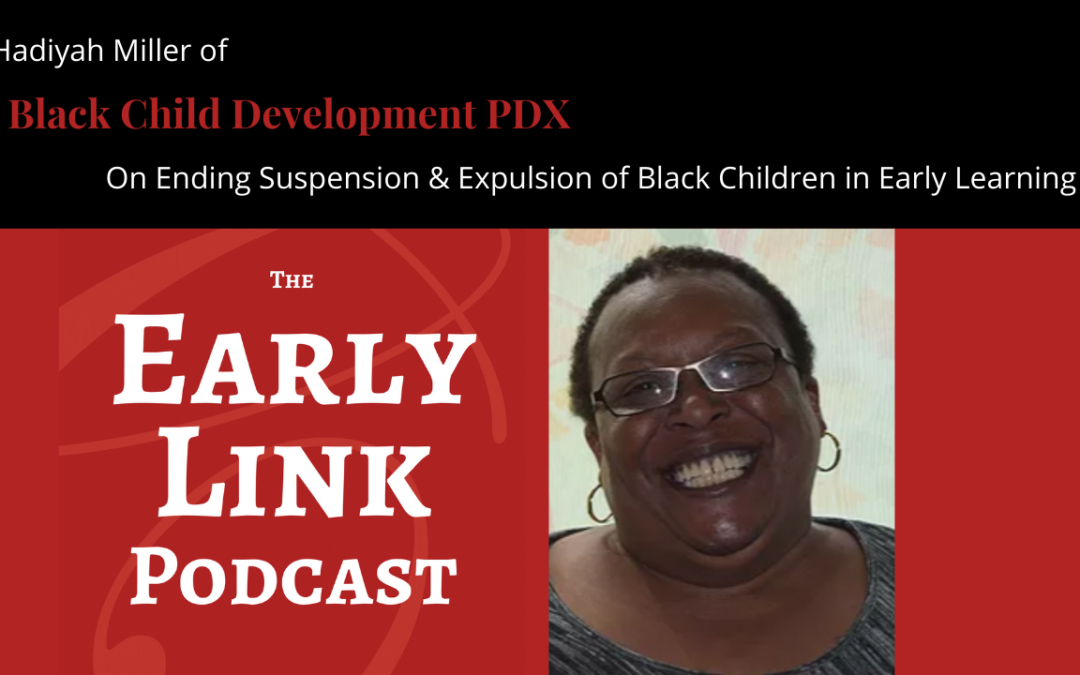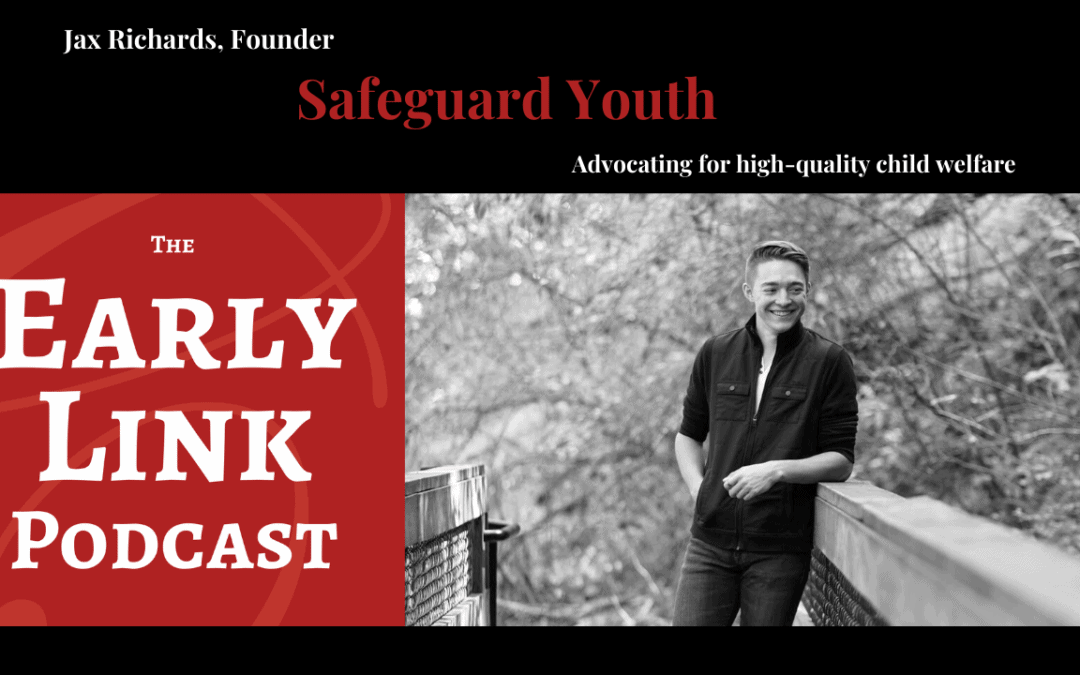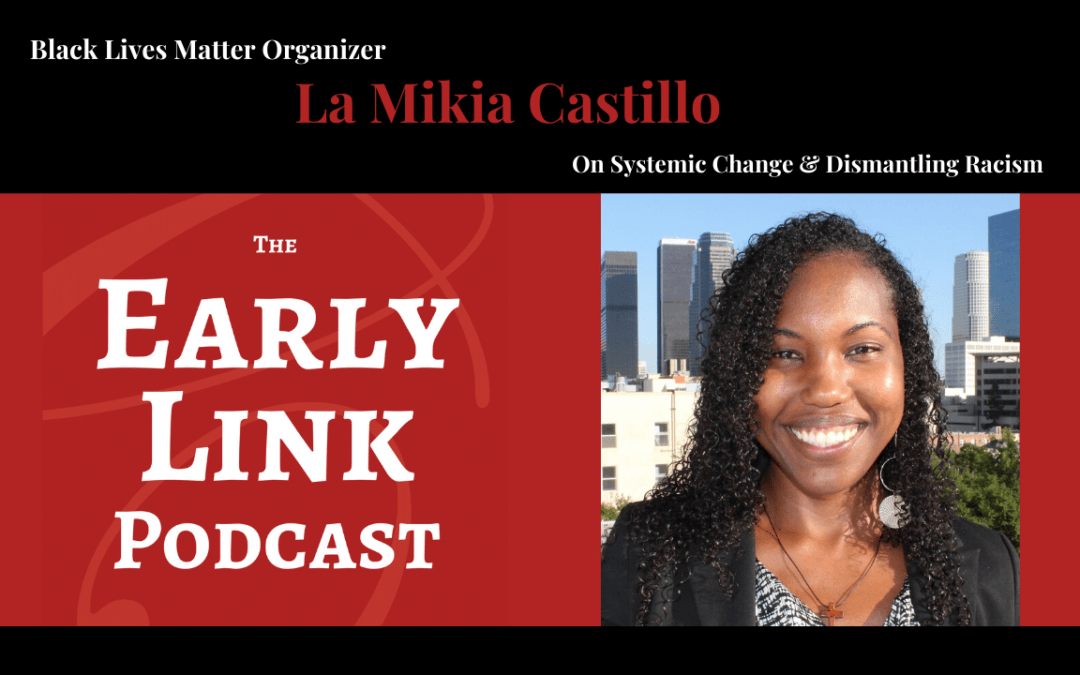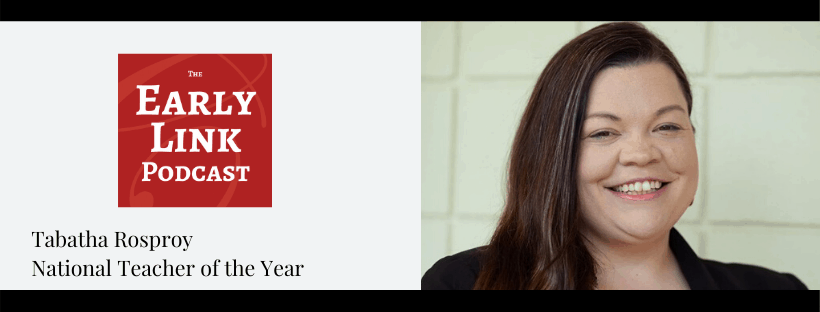Rafael Otto: Welcome to The Early Link podcast. I’m Rafael Otto. I’m talking with Jax Richards, president and founder of a fairly new nonprofit organization called Safeguard Youth. Safeguard Youth is a student-sponsored and youth-led organization that began at Oregon State University. Its mission is to provide a platform for foster youth and survivors of child abuse to advocate for a higher quality child welfare system. Jax, it’s great to have you on the podcast today.
Jax Richards: It’s great to be here. Thank you for having me.
RO: I wanted to start with your opinion of Oregon’s child welfare system. It’s received significant criticism in recent years and has been described as dysfunctional. How would you describe Oregon’s child welfare system today?
JR: The biggest thing I’d describe it as is unknown, just because you’re right, it is dysfunctional. It is something that has received a ton of criticism. It’s something that has significant problems that need to be addressed, but those problems can not be properly addressed unless people really know about the issue. And the super-majority of Americans weren’t abused as children and have never been in foster care. So a lot of people don’t even pay any attention to it. And that’s one of the biggest obstacles facing the system today.
RO: How would you describe how the child welfare system is working for children under the age of eight? I believe there are a larger number of kids, eight and under or five and under, in the child welfare system compared to older kids. So what does that look like for young children?
JR: It’s very difficult both within the system and outside the system. Because if you look at kids under the age of eight within child welfare, that’s over 50% of the population of foster kids: under the age of eight. And it’s something that’s very difficult to address because these kids have more needs than your average teenager. And they’ve been through some very hard experiences. You have to clothe them, you have to feed them, you have to educate them. You have to cater to their mental wellness in addition to all of this. And it’s something that’s simply not being adequately addressed within the current system and even expanding down.. if you want to get down to the age of toddlers and infants, even kids under the age of one, make up approximately 11% of Oregon child welfare system, and those infants obviously have a high demand of things that need to be done for them, such as changing them and taking care of them and properly just being around and showing connection. And that’s something that’s not adequately being done right now.
RO: One of the things we talk about in our arena of early childhood is that, you know, those years from birth through age five are tremendous… a time when the brain is growing and the environment that a child grows up in is really so important.
JR: Yeah. That really healthy environment, and that psychological connection to parents and family, and just having a strong social community can make the difference in a child’s life. And when you take a child out of that environment, even if it’s not healthy, and put them in another environment, that more or less is not going to give them any kind of social connection, it’s just going to damage them. And you can give them all the counseling in the world, it’s something that will permanently be a scar on them.
RO: I have the information about how frequently children are moving when they’re in the foster care system.
JR: It’s difficult to say, and it depends on the child. Something that’s very interesting within the child welfare system, is it very disproportionally impacts minority and marginalized communities, specifically members of the Black community and members of the LGBTQ+ community. And those children that identify with those communities actually get moved around significantly more than your straight white child. And it varies child to child. There have been kids that have been moved around over a dozen times, and there are kids that have found one spot and been able to stay there.
RO: Do you have a sense for why Black children and LGBTQ children are moving more frequently? Do you have information on why that might be the case?
JR: Well, it varies depending on the demographic. Within the African American community… t’s actually very interesting. Federal studies have indicated that race does not play a factor in the abuse rates of children. African American children are just taken more from their homes and put into foster care because of the systematic racism that has played into the structure of that system.
RO: Right.
JR: And if you look at foster parents, or foster facilities or people that would take in these children, typically they are predominantly middle-aged to older-age Caucasians. And it’s something where part of it is a cultural element where African Americans obviously have a different culture that they are used to and a different way of life. And that’s not something to be shunned… that’s something that should be supported and something that should be championed and advocated, but it’s not currently the case in the current child welfare system, which is very traditional. Especially as you start to get into Southern and Eastern Oregon specifically.
RO: Tell me about why you’re passionate about improving the foster care and child welfare system.
JR: I have a long personal story that I could get into, but the gist of it is, I was born in a house where we had to choose between electricity and running water because we couldn’t afford both. And my mother, God bless her heart, she worked 60, 70, 80 hour weeks. But on the other end of that, my father was and still is a career criminal and abusive sociopath. I was subjected to some very inappropriate, very harmful behavior at a very young age, starting at as young as three or four. And that’s something where it stuck with me to this day. And I’ve been put in situations, with my father specifically, where I have been starved and I have had to go to the streets to find food. And it’s something where I’ve been told the system was contacted because of what was happening to me, but there was no follow-up, or I was never properly or thoroughly investigated. And while I’m not a foster child or have ever been a foster child myself, it’s something that… we’re talking about the most vulnerable population that our country and our state has to offer. And people just don’t seem to care about it.
RO: I appreciate you sharing that. And I admire your efforts to raise awareness on this issue. I know you’ve got a tremendous amount on your plate. You’re in school, you’re double majoring in economics and social public policy at Oregon State. Did I get that right?
JR: Yes.
RO: Okay. And on top of that, you are the founder of this relatively new nonprofit that you started last year, Safeguard Youth. And you’ve gotten that off the ground. Tell me a little bit about the organization and what’s driving your sense of urgency.
JR: Safeguard Youth started my fall term at Oregon State. I had to write a final essay for one of my writing honors classes. The topic was a policy essay, and I decided to do it on Oregon’s foster care system, just kind of out of the blue. I thought it was a good topic and not a topic a lot of people would pick. And as I started researching throughout the night and eventually pulling this whole all-nighter into writing this paper, because it was inevitably due the next day, I realized that our system is almost entirely broken. And it was very disheartening to see how many kids have been permanently damaged either physically or psychologically by not just the system’s lack of doing something, but the system even trying to do something. And that’s kind of what inspired me to start this organization. From there, I was working a job on the side, so I took some of my pocket money and I registered the name, a domain name. And from there, I got a couple of students at Oregon State and we registered as a corporation and then we turned it into 501c3 nonprofit. And then we started recruiting kids from Portland to Florence start kind of raising awareness of this.
RO: And so you’ve got kids involved in your network.
JR: Right now… we started in December, and I would like to note that a global pandemic started in March. So right now we have about 50 youth from Portland to Florence as young as eighth grade and as old as graduate students who were all really excited to get involved coming the next academic year. And I kind of told everyone to take this summer and do what you need to do because obviously a lot is going on right now. But we’re really excited to start back in the fall and connect and recruit and fundraise and come the 2021 legislative session, we’re hoping to make a big difference.
RO: Now I know that you’ve had a chance to testify, this past February, in front of the Oregon Senate committee. Tell me what that experience was like. You were talking about Safeguard Youth and the need to improve many, many aspects of the foster care system. Tell me what that testimony experience was like.
JR: Because Oregon State is in Corvallis, I actually initially met with Senator Gelser who’s the chairwoman of the Health and Human Services Senate committee. And I initially met with her and talked to her about the nonprofit, and she invited me to testify. I came and testified, and it actually happened the same day as the Senate Republican walkout for the climate change cap and trade bill. So it was a very interesting day to be at the Capitol…
RO: A challenging time to be at the Capitol!
JR: A very challenging time. And it’s something where I learned a couple of things. The first thing was… when I was actually testifying, I started to tear up, and I believe you can see that in the video, because that was the first time that anybody with any kind of legitimate power or policy experience had begun to listen to my story, and my voice, and my experiences with childhood abuse. And that’s something that was incredibly powerful for me.
RO: Gelser has emerged as a champion. Are there others that you’re looking to in the legislature?
JR: There were a couple, and we’re still going through right now. We have a policy division, where we have students, typically are political science students at various universities looking to get involved, and we have them work with their legislators. And I’m not going to name any names right now, just because a lot of it is still very preliminary, but we are currently looking at Gelser in the Senate. And then we’re looking at a couple Democrats and Republicans in the House to kind of help champion some of this reform as we start to go through.
RO: I wish you luck in prep for 2021. I know that’s a lot of work. I did want to ask you about the… there’s the federal lawsuit filed on behalf of 10 plaintiffs, all children who have suffered from what seems plainly to be a broken child welfare system. The state’s audit has revealed many, many issues: high loads for caseworkers, systemic separation of siblings, many other inappropriate settings. It would take more time than we have on this podcast to discuss each of those problems, but I’m wondering how you’re tracking on all of these issues and what you’re seeing. How do you describe that? And I guess the second part to that is what do you feel is the… where do things need to go? What’s the solution?
JR: Well, I think the first solution, the first step in this major solution, is what we’re doing right now. Part of the reason I started Safeguard Youth is because if you look at the current system, if you look at who particularly the Governor has appointed to a lot of these child welfare foster committees, it’s doctors, it’s lawyers, it’s judges, it’s prestigious policymakers. And those people are incredibly important in finding some kind of solution. But statistically speaking, none of those people have ever been in foster care or have ever experienced childhood abuse. And I’m not saying that some of them haven’t…
RO: Sure.
JR: These are people that cannot connect to the experiences that they are trying to address. And when you talk to foster kids, and when you talk to victims of childhood abuse, they have their own ideas and they’ve seen firsthand what can be done. And it’s something where these voices are simply not making it into the current conversation, the room where it happens, so to speak. And it’s something that needs to happen. That’s what we’re working to do. And as far as the lawsuit goes, the biggest thing I’ll just say about that is to anyone listening, just Google “Oregon child welfare lawsuit” and read some of the cases and some of the stories about the plaintiffs that have come forward. We’re talking people like a nine-year-old girl who was sent to an out of state facility where she didn’t have contact with a case worker or her family, and she was restrained and drugged. Or a 17-year-old Native American boy who had moved foster facilities more than a couple dozen times.
RO: Right.
JR: Where these stories are horrific, they’re hurting.
RO: They’re heartbreaking.
JR: It’s devastating to read and to listen, but it’s something that people need to read and to listen to, because they’re only going to keep happening if people don’t give it attention.
RO: When you think about the amount of coverage that’s taken place around the child welfare system and the foster care system, there has been some pretty good coverage, I think, in the media.There’s been a number of stories in the Oregonian. Is there, from your point of view, a story that needs to be told that’s still out there? What needs to be covered right now?
JR: I think one of the biggest narratives that people can learn is kind of the very nature of child maltreatment as it stands, where a lot of people, when I say child abuse, think of the drunkard father coming home and taking off his belt and beating his kids. That does happen. Also, what a lot of people think of is like the pedophile who kidnaps a kid in a white van, and that does happen. But statistically speaking, those cases or case studies are less than 15% of all child abuse or child neglect cases being reported. Child maltreatment is much more vast than that. It’s kids that aren’t having their sexuality accepted by their parents. It’s kids who don’t have proper transportation to get to their education facilities so they can learn. It’s kids that aren’t being fed. It’s kids that overall are just not having a good quality of life. Federally, almost 80% of child maltreatment cases, or kids in foster care, experienced some form of neglect where it’s not so much [that a caregiver is] actively trying to hurt the kid. It’s the kid is not getting what he or she needs. And that’s something where sometimes it isn’t the parent’s fault. Oftentimes I’ve heard stories where parents can be working as hard as they can, but, you know, they just can’t get food on the table that night. And that is considered child abuse. And that’s not the parent’s fault. It’s more of a systematic problem. And I would say, as far as the narrative the media pushes… a lot of people, especially recently, there’s been some Netflix documentaries and reporting on the news where you heard stories about these kids dying from horrific beatings, and that is horrible. And that is a huge part of the conversation. But another part of the conversation that doesn’t get nearly as much attention as just that there are kids still dying and that there are kids still suffering, but nobody is taking an active role in that suffering, so to speak.
RO: You’ve touched on this a number of times. You’re looking at the issues many different ways. You’re looking at sort of what’s happening in the home environments of kids, individual level, environmental concerns, physical, emotional abuse, those kinds of things. But you also have a systemic lens on things recognizing that our systems are also affecting the dynamics that are happening in the family and influencing the environments that children are raised in. Could you say more about that?
JR: Something that’s been a topic of question recently has been school guidance counselors and school social workers, and school nurses, where the ACLU has actually been pushing this pretty hard lately. But when a kid goes to school, it’s something that should be a phenomenal environment for them, where that kid should be able to access food. They should be able to access water. They should be able to access resources and people that are willing to help and willing to improve their lives. But if you look at the demographics today and what federal organizations recommend these schools have, many of these schools aren’t being properly funded. And a lot of these schools therefore cut social workers, and guidance counselors, and nurses. And it’s something that every school in America has a cop to protect them from school shootings. But, you know, it’s something where people should be paying attention more to how the students are being treated within the school. And it’s something where that’s just a small example of the systematic issues we’re talking about. And I could go back and talk about one of the biggest things I’ve actually been saying to everyone: a lot of these policymakers, on the local, state, and federal levels, don’t often address child abuse properly, if at all, just because they never had to live through those experiences. And that’s something that is kind of just swept under the rug, because nobody pays it much attention anymore.
RO: Do you see an opportunity given everything that’s been happening in our society? I know that we’ve got COVID and the pandemic, and we also have many instances of police brutality, and more and more people are really trying to talk about racial justice and the racial inequities in our society. But in all of our systems. It’s kind of bubbling up everywhere we turn. And it’s an important discussion. How are you thinking about things like taking an anti-racist position when you think about changes to the child welfare system or to the foster care system?
JR: Well, we absolutely have taken an anti-racist position. Something that I started as soon as Safeguard Youth was started, literally within a week of starting it, I realized that, while I have my own experiences with childhood abuse, I can’t relate to everything because I haven’t been discriminated against because of the color of my skin, or because of my sexuality. And it’s something where then we started to include more people in the conversation very early on. Safeguard Youth started what we call community caucuses, where we have Indigenous persons, Black affairs, LBGTQ+ affairs, Latinx affairs… where all of these, divisions, or departments, are led by members of those identifying communities. And they’re specifically to provide a platform to make sure their voices don’t get lost in that process. And recently we’ve been working to recruit specifically more African American and Black youth to kind of partake in this program just because they are disproportionately represented within the child welfare system. And it is something that… when I say the child welfare system, a lot of people think of foster care. And foster care is a large portion of what I’m talking about. But, you know, we’re looking to education, we’re looking to social programs, we’re looking to everything because it’s all interconnected. It is all part of a system. And if a kid has a negative experience in one place and then is neglected and another, both systems need to be addressed.
RO: When you look to 2021, what are your goals? Are you looking for investment? Are you looking for policy changes? What are you working on?
JR: We’re looking for a little bit of everything. And what I mean by that is I don’t like setting the bar too low. And I also don’t like restricting ourselves and where we’re going. When I started, I thought this was only going to be an advocacy and policy based nonprofit. But recently we’ve recruited some individuals who want to start doing trauma workshops at different universities, and I think that’s a great idea. And we’ve had them kind of spearhead that, and I haven’t been too much focused on that. But something I love about our organization it is that it is entirely youth-led where a lot of nonprofits go back to this narrative of like… you look at a bunch of child-based nonprofits where a lot of these people are 30, 40, 50 year veterans in the system. And a lot of them come from upper middle class, white families. And it’s something where statistically speaking, they probably haven’t encountered child abuse. And I’m not saying they shouldn’t help. They absolutely should help. But this is now a question of providing a microphone, providing a platform and providing a voice to the people that most need to be heard. And those most vulnerable communities within the foster care communities.
RO: Really elevating the youth experience and, and those with lived experience. Right?
JR: Exactly. And it’s something where we are youth-led and we may be a little immature, so to speak, but we provide great experience for youth because at the end of the day, we are a legitimate 501c3 nonprofit, and they have a 19-year-old as their director, and that’s me. And then we have a 20-year-old as one of our communications directors, when we have a 15-year-old as another one of our communications directors. And we have a team of students studying finance at OSU and U of O becoming our fundraising and financing team. And it’s something where we’re a bit dysfunctional, I’ll admit, but I love it because it’s genuine. And it shows how much that youth voices actually want to be heard. And they care about being heard. And it’s something we’re looking into 2021, something I’m proud to have started engaging in is talking with DHS and a ton of other nonprofits. And everyone I’ve heard, or everyone I’ve talked to loves our idea of providing this kind of youth voice. And looking to 2021, I’m just excited to kind of see what happens. And we’re going to go to the legislature and we’re going to work with various departments. And I don’t have a dead-set goal of what we want yet, but something I do want to address specifically is… especially with all the conversations going around, I think it’s very important we address the impacts on minority and marginalized communities, and that’s one of our top priorities going forward. And I’m not exactly sure how that’s going to be addressed yet, but that’s something I’m also okay with. Because the biggest goal I have is just to get youth to the table and get youth voices heard.
RO: I’d say it’s absolutely a worthwhile goal, so I applaud your efforts. I am curious though, Jax: how do you keep from just being overwhelmed by the amount of work that you have on your plate and the size and scope of the problem? And what keeps you motivated?
JR: I mean, that’s a question I actually get quite a bit. I will say a little more about me. Right now, I’m going into my summer… what would be like my technical summer of college. But I’m running this nonprofit, I’m currently working two jobs. I’m taking another 19 credit hours. And it’s something where… it’s a lot of work. It really is. But it’s work that I feel is necessary to do when I love every second of it, because it’s something that for every five or ten hours of grueling research or advocacy or designing or anything, relating to the nonprofit, it’s a reward in and of itself because it’s worth it for every kid I connect to that says, “I’ve been looking for something like this, all of my life.” And for every kid that I talk to that says, “I’ve been waiting to have my voice heard.” Because there are so many kids out there that just haven’t had their voices heard.
RO: If people are interested in learning more about your organization, about your work, and getting involved somehow… adults or youth… how can they do that?
JR: You can go to our website, SafeguardYouth.com. It’s a pretty basic website at the moment. You can sign up for our newsletter. You can contact one of us about getting involved in a position. And we have a variety of departments and positions that are constantly recruiting and constantly looking for new voices, from communications to finance, to fundraising to event planning. That’s where you can get involved.
RO: Okay. That sounds great. Jax, I really appreciate your time. And thank you so much for joining me today.
JR: Of course. Thank you for having me.
